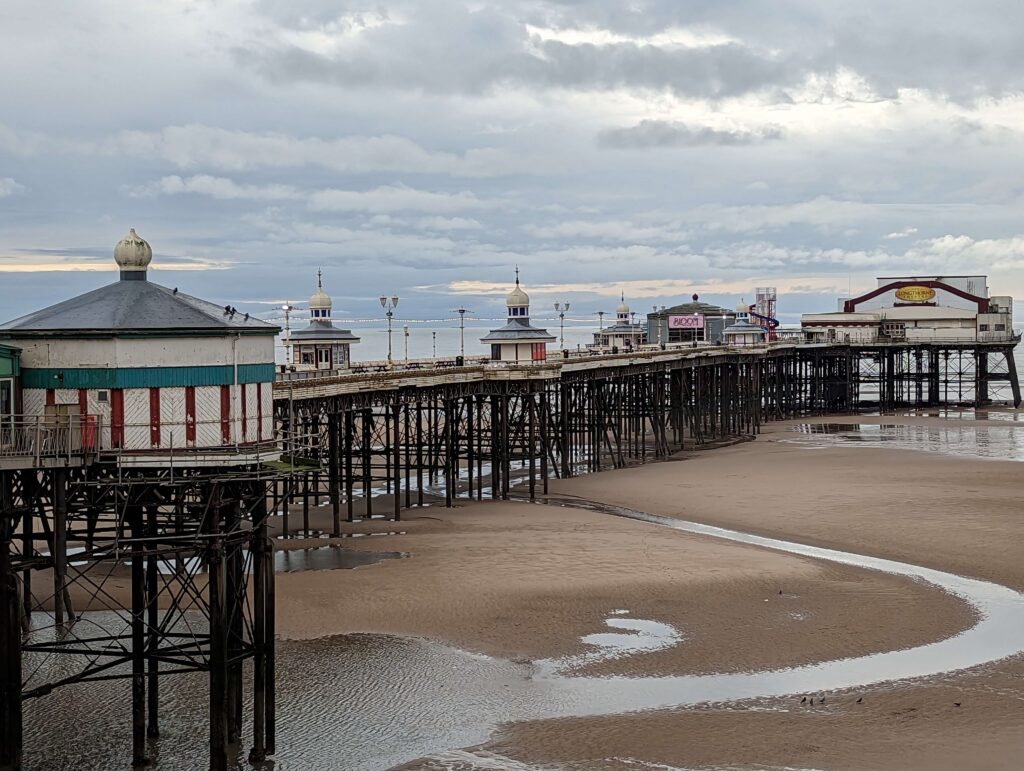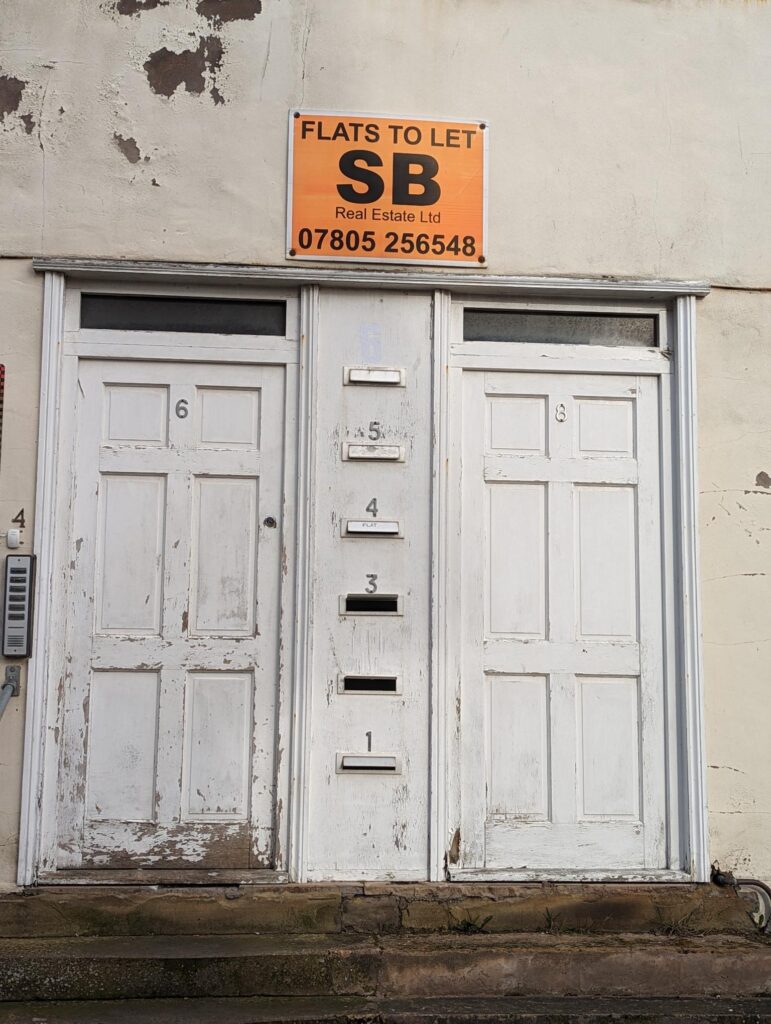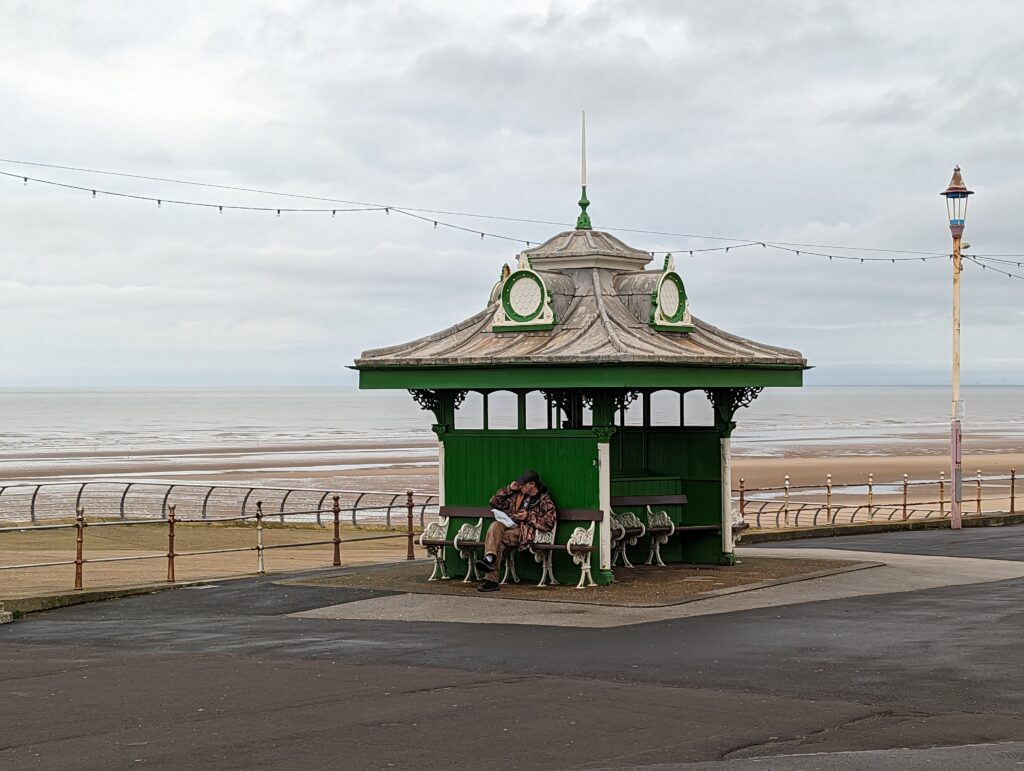Emptiness, edge, and emplotment
DOI: 10.60650/EMPTINESS-HDN0-MG05
This report is based on introductory remarks for the EMPTINESS project’s joint workshop with the University of St Andrews, entitled Life on the Edge, held on 16-17 March 2023 at The Burn, Brechin. The notion of the edge as a potential keyword of our times was proposed by Daniel M. Knight. The purpose of the workshop was to think through the family resemblances between emptiness, the edge, and other concepts, ethnographic and philosophical, that attempt to make sense of the current historical moment plagued by multiple intersecting crises.
Imagine persisting in being in an emptying place, a place that’s losing its constitutive elements, as we have come to describe it: schools, people, shops, transport. It’s harder to get things, harder to meet people, harder to get to other places, and harder to imagine overcoming the ills of the present. Maybe that’s exactly what you like – to be left alone – but maybe it’s not. Maybe you’d rather live in a vibrant place, but for some reason you are stuck in this, emptying, place, or you are stuck to it. It’s your place. But there could come a time when you start to feel the unbearable heaviness of being. You’ve reached your outer limits. You’ve reached the edge of your being and the edge of your being is inseparable from your being in this, the emptying place.

Now imagine that you are trying to survive in London. You have not had a job for a while, you are not even looking for one, you are often depressed. You cannot afford your rent anymore; the housing benefit falls short of the costs, and there is nothing cheaper available. You do a Google search for ‘cheapest rent in Britain’ and you get: Blackpool.

In Blackpool, where England meets the Irish Sea, it’s possible to obtain cheap accommodation at £60 per week. So, you pack up your belongings and take the train to Blackpool. You are not alone. Other people, too, have come to Blackpool to persist in being. But Blackpool itself is not doing so well. It is also struggling to persist in being. From a thriving working-class resort town built in the first half of the 20th century, it has turned into a place where people go to be poor, as one media article put it. 20% of Blackpool’s working-age population is in ‘involuntary inactivity’, i.e. not looking for work due to illness or feeling discouraged. 38% of its private housing stock was classed ‘non-decent’ 10 years ago. 27% of its population is transient, i.e. living in cheap, temporary accommodation.


If emptiness is the condition when places lose their constitutive elements, including temporal orientations, edge is the outer limit – both spatial and temporal – of their ability to persist in being in a familiar or desirable form. “Everything,” writes Spinoza, “in so far as it is in itself, endeavours to persist in its own being”. I am not going to delve into the notion of conatus – i.e. striving for being – in Spinoza nor its genealogy or subsequent transformations. I am also going to leave out, for now, a discussion of the constitution of that which persists in being. I am using the notion of persisting in being as an inspiration for thinking about the edge as the limit of a dynamic process. In a recent contribution to a Cultural Anthropology forum on topology, Khashayar Beigi describes Deleuze’s lecture on Spinoza:
…Deleuze offers two contrasting approaches to the metaphysical problem of limit: 'the outline limit' and 'the dynamic or tension limit.' The first concept of limit points to ending coordinates such as the external surface of a thing or its disappearing extensions into the void. The second constitutes a measure of power internal to itself in which the limit to a thing is known in what the thing is capable of doing, its acting space proper to itself.
As an example of the latter, Deleuze draws on the limit of a forest as the power of its action:
…you are walking in a dense forest, you're afraid. At last, you succeed and little by little the forest thins out, you are pleased. You reach a spot, and you say, "whew, here's the edge." The edge of the forest is a limit. Does this mean that the forest is defined by its outline? It's a limit of what? Is it a limit to the form of the forest? It's a limit to the action of the forest, that is to say that the forest that had so much power arrives at the limit of its power, it can no longer lie over the terrain, it thins out.
This notion of the edge as the limit of persisting in being is quite different from the sense of the edge used by Erik Harms in a book called Saigon’s Edge (and also in a forum in HAU on remoteness and edginess), where people living in the margins of the city are on the edge, oscillating between power and danger, and therefore also edgy. Life outside the centre of the city at times pushed them over the edge, and at other times put them on the cutting edge of opportunity. In this interpretation, edge is more akin to crisis: you can either fall off it or jump on it. It is a threshold between demise and opportunity.
In the first exercise of imagining, where I talked about persisting in being in an emptying place, the edge is the outer limit of a person’s perseverance. In the second exercise of imagining, the edge is the outer limit of a place’s physical and social existence – it is in Blackpool that land meets water and struggles to persevere in its form (or lets go, as the case may be), and it is in Blackpool that British working-class existence also runs into limits, transforming into sub-proletariat. The decaying space of leisure of the British working class meets the decaying bodies, sometimes quite literally, of the former British working class.

Let us consider two descriptions of Blackpool. First, from the Mass Observation project run by Charles Madge and Tom Harrison in the 1930s:
Blackpool is visited annually by 7,000,000 visitors who breathe the sea air and throng the 5,000 sideshows and joy-machines. They are greeted by the pierrots, the Sharma Yogis and the Five-Legged Cow, the Headless Woman, the Museum of Anatomy with the female Jesus and the pregnant male.… This is the rich outcrop of industrialism, the bright mirror of how the workers spend their week of freedom from factory and mine.
The irony, as it turns out, is that even in the 1930s most of the nearby workers did not actually want to go to Blackpool. They dreamt of quiet countryside, some dreamt of going to Oxford, and others to more refined seaside resorts. Only 24% of the surveyed wanted to go to popular seaside resorts, such as Blackpool, but 69% ended up doing so because nothing else was within reach. Even in its heyday, Blackpool was not a central object of desire but was at the edge of what was possible.
Now consider this description from The Financial Times in 2017:
The elephants that lumbered up and down Blackpool’s beach have long gone. Britain’s political parties have stopped decamping to the town for their annual jamborees. Even the deckchairs have left: the local government sold all 6,000 of them three years ago to a company in the affluent county of Cheshire. The one thing that hasn’t disappeared is the people. Outside London, this resort on England’s north-west coast is one of the most densely populated places in the country. Rather than the classic downward spiral of a place in decline, Blackpool is stuck in its own strange dynamic. The more the economy rots, the more some people come… In a country where affordable housing is hard to find, people are gravitating to coastal towns such as Blackpool, where the receding tide of tourism has left behind a surfeit of old B&Bs that have been turned into bedsits. But cheap flats are not the only draw. Many Brits have happy memories of Blackpool: the smell of salt and frying fish; the scream of the roller coasters; the thunder of the waves on windy days. …in Britain, it is increasingly on the country’s physical edges, in its seaside towns, that you find people on the outside of the economy looking in. Blackpool exports healthy skilled people and imports the unskilled, the unemployed and the unwell.
Indeed, England’s physical edge is also the edge of the working-class ability to persist in being. Many have nowhere else to go beyond the edge – no New World, no new life, no manual labour in overseas colonies. With empire gone, no spatial fix in site.
I’d like to think of the edge, then, as an existential category of outer limits rather than a boundary of a form. At the edge, a forest can no longer extend itself, a land mass can no longer win over water, a building with its innate upward tendencies (according to George Simmel in his essay on ruins) can no longer persevere against nature and becomes a ruin. And, at the edge, a person or a place can no longer persist in being in the desired form.
Like emptiness, the edge should not be merely a metaphor or a a cool new concept that promises to better capture the historical moment we are living. It is related to, but not competing with, all the other terms we have encountered along the way – emptiness, the void, nothingness, darkness. How to think of this relatedness was perhaps one of the challenges that we faced over the next two days of the workshop. Should we think of this relatedness as a matter of ‘family resemblance’ where the things thus marked are connected by a series of overlapping similarities where no one feature is common to all the things? Or, should we think of the edge and emptiness topologically, that is, as the same thing only transformed in the process of looking at it or as a result of other forces acting upon it? Topologically speaking, emptying places have – or are – edges, and edges can turn into emptiness. A place, such as Blackpool, can be the edge of England as a land mass and the edge of working-class life as a socially produced place, and it can be an emptying place, with abandoned buildings, lost tourists, rise of involuntary inactivity, illness, death.
The second challenge we faced over the course of the workshop was: keeping space and time together or, rather, recognizing that space and time are inseparable. Things persist in space and in time. Just as emptiness is both a condition when a place loses constitutive elements and a moment when the old is dying but the new cannot be born, the edge is an outer limit and a moment of crisis. One method for keeping space and time together is to ask, in the spirit of Mikhail Bakhtin: what is the chronotope – or the repertoire of chronotopes – of the now? In what genre do we live our lives? How are our actions emplaced spatially and temporally?
If the chronotope of the Greek epic was “an alien-world in adventure-time” where heroes suddenly and miraculously appear in one place and then in another in pursuit of love (or something else), and if the chronotope of the idyllic novel was one of “unity of place as a locus for the entire life process” where locally embedded lives unfolded according to cyclical time, then how could we describe the chronotope of the now? A crumbling world in crisis-time? Islands of refuge out of time? Or something else entirely?
This is an Open Access article, distributed under the terms of the CC-BY (Creative Commons Attribution 4.0 International) licence, which permits unrestricted re-use, distribution, and reproduction in any medium, provided the original work is properly cited.